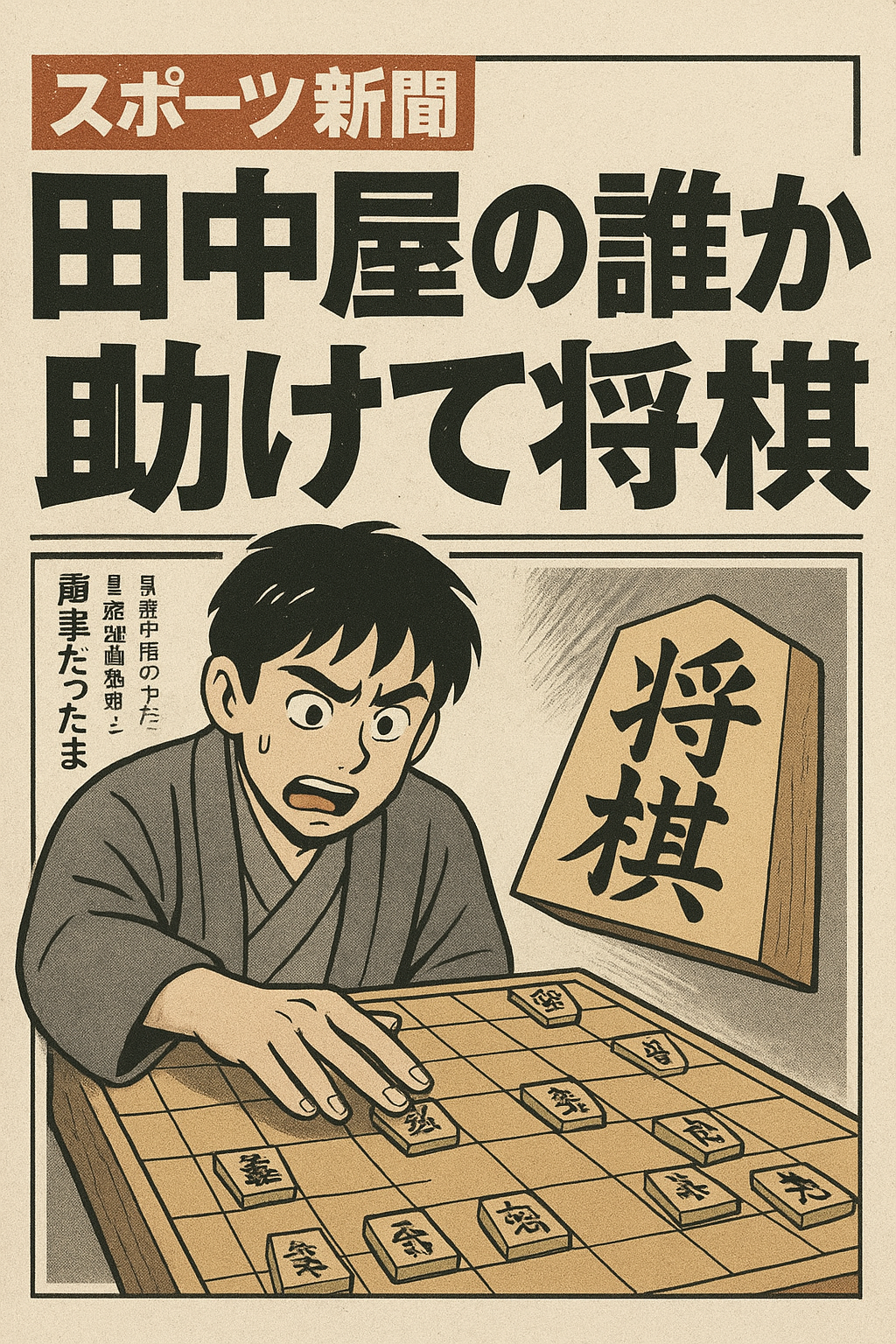🌸Welcome to Sakura Saku Japanese Lesson!🌸
I’m Asami. This blog is for English speakers who want to learn Japanese easily.
You can find simple lessons, tips, and summaries of my Twitch streams here.
Whether you’re a beginner or just practicing, this blog will help you enjoy learning Japanese.
This is Part 1 of this lesson. If you haven’t read Part 2 yet, check it out here.
📖Let’s review あいうえお
In this lesson, we learn how to read and write the Japanese hiragana “ka, ki, ku, ke, ko.”
We reviewed the vowels “a, i, u, e, o” and some basic features of hiragana that we studied in the previous lesson.
(For more details, check the Lesson 2 blog!)
あいうえお are the five basic vowel sounds in Japanese, and they are very important to know before moving on to かきくけこ.
Look at the chart below — each of these letters uses the vowels you already know.
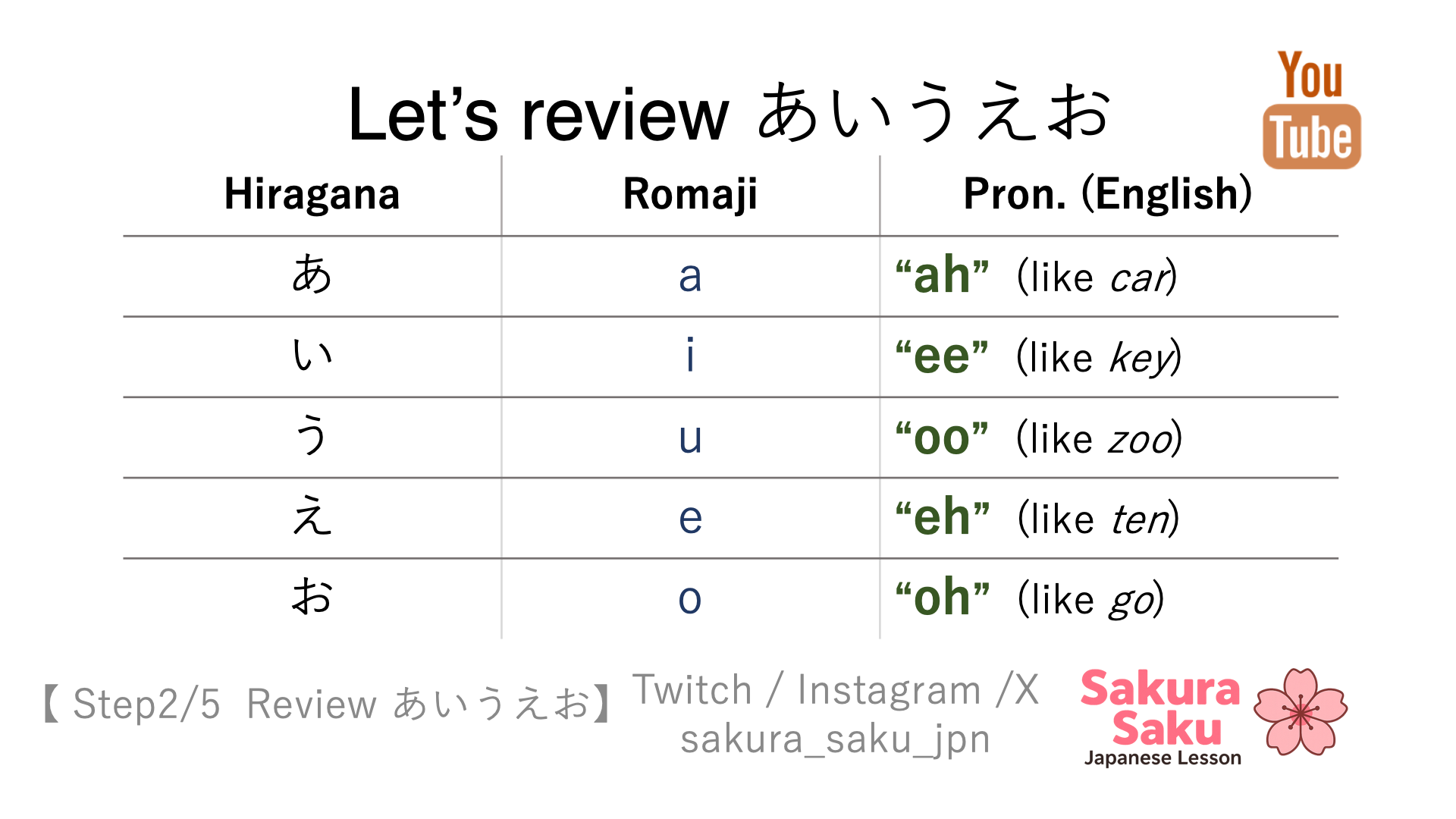
You can read
· あ like car
· い like key
· う like zoo
· え like ten
· お like go
So you can say あいうえお. Easy, right?
Good! Now, let’s move on to かきくけこ.
🗣️How to read かきくけこ
Now let’s learn how to read かきくけこ.
In this lesson, we’ll learn how to read and understand the hiragana characters か, き, く, け, こ.
The chart below shows each hiragana character, its romaji (alphabet form), and an English pronunciation hint.
You can also see how each sound is constructed.
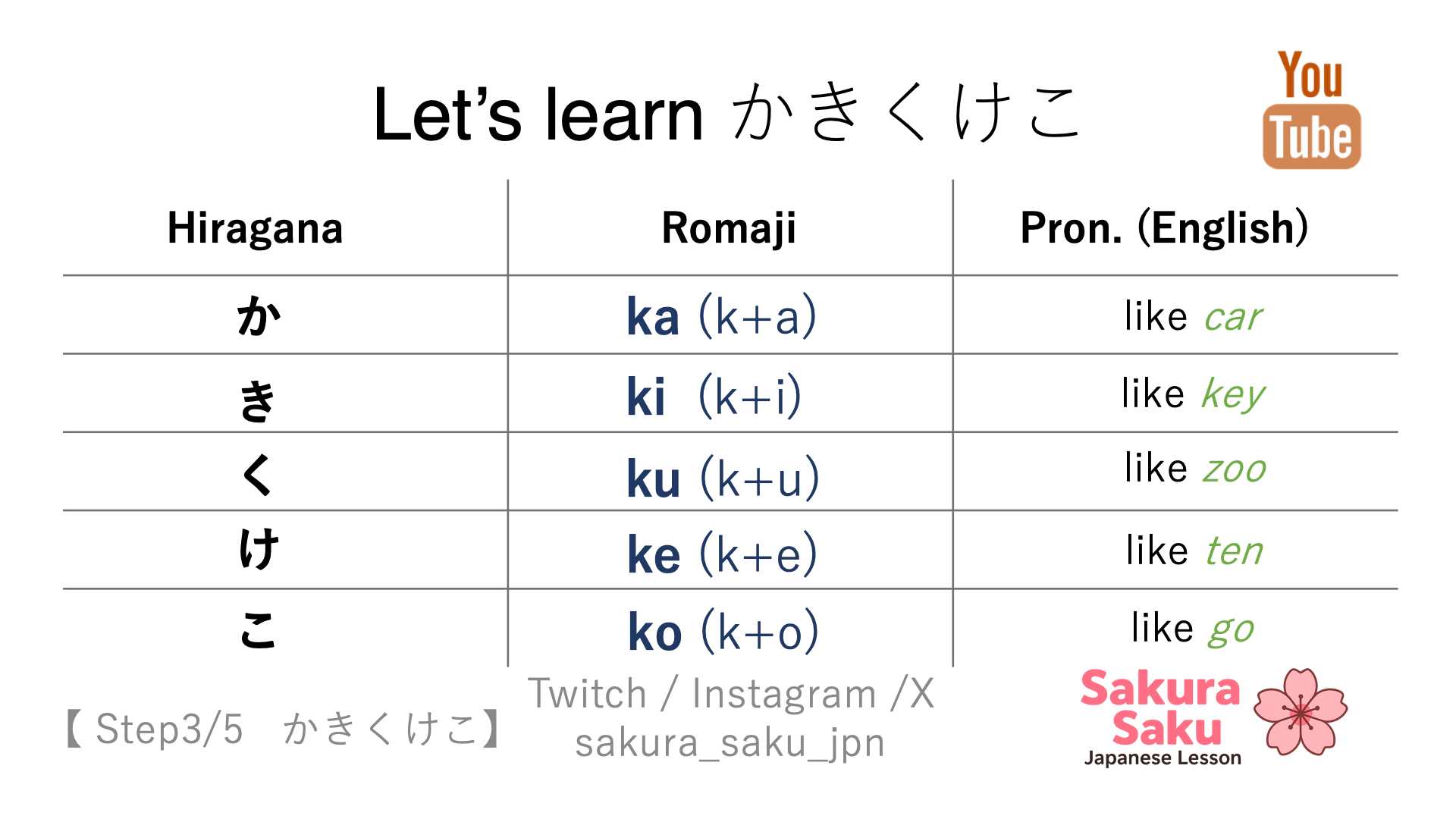
It’s actually quite simple — these five sounds are made by combining the Japanese vowels (a, i, u, e, o) with the consonant “k.”
For example:
- k + a = ka (か)
- k + i = ki (き)
- k + u = ku (く)
- k + e = ke (け)
- k + o = ko (こ)
So, each character is formed by adding the consonant k to a vowel sound.
Easy, right?
Let’s try saying them together: ka, ki, ku, ke, ko.
Great job! 🎉
📖Let’s learn words with かきくけこ
Now that we have practiced the hiragana か, き, く, け, こ, let’s learn some simple words made with these characters.
Look at the hiragana and the picture hints, and see if you can guess how to read and what each word means!
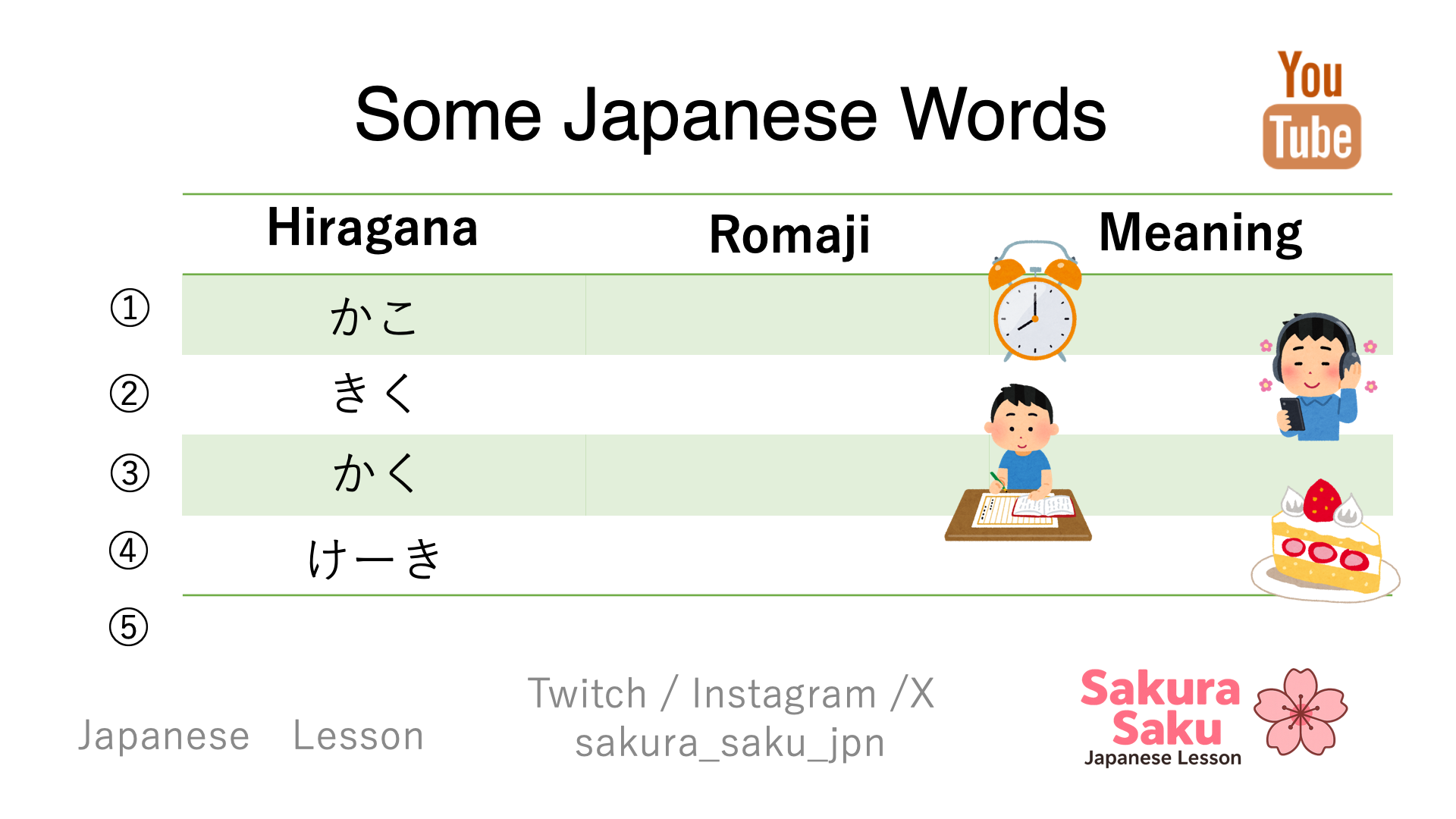
Here are the answers! Check how you did.
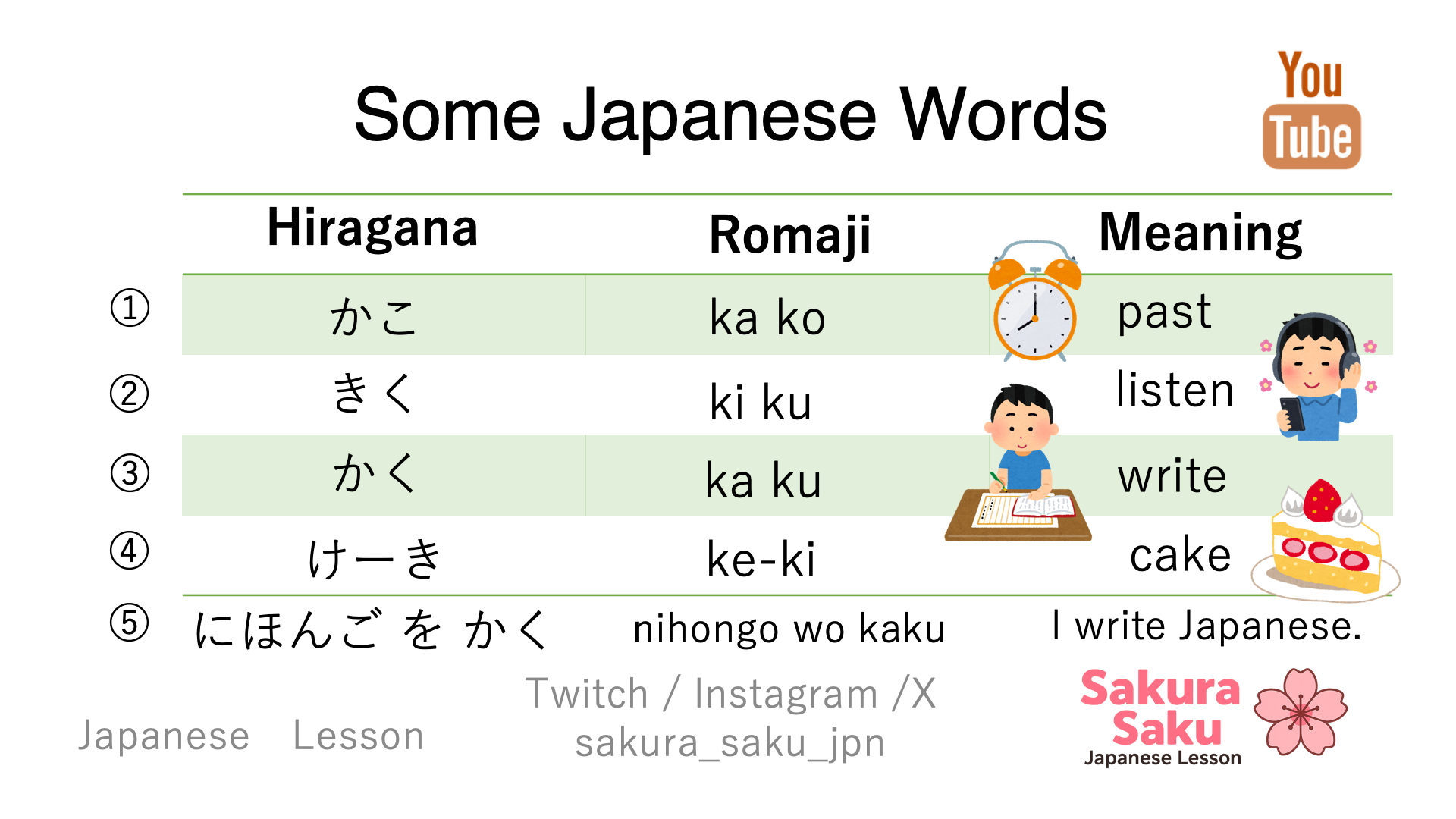
💡 Note: In the word けーき (ke-ki), the long line ー is called a long vowel mark.
It makes the vowel sound longer, so instead of saying keki, we say keeki.
“Cake” is usually written in katakana in Japanese, but today we are practicing writing it in hiragana.
Bonus Phrase
As a bonus, here’s a short phrase you can practice:
にほんご を かく — nihongo wo kaku — “I write Japanese.”
You might already know 日本語 (nihongo), and we learned かく (kaku).
After we finish all the hiragana, we’ll learn を (wo), which is a Japanese grammar word.
To be continue in Part2. Please stay tuned!
📱Follow Me on SNS!
To stay updated on my lessons, follow me on:
Instagram&X – where I post useful Japanese phrases, culture tips, and short lesson previews.
TikTok↓ @sakura_saku_jpn
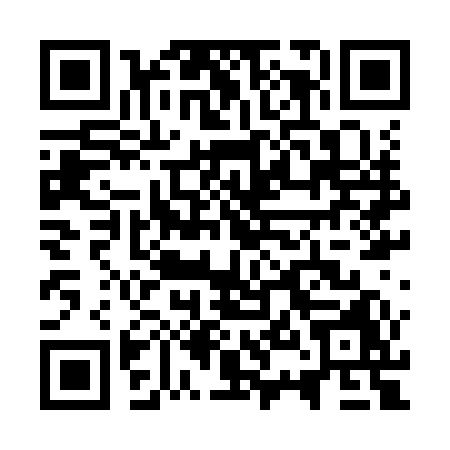
Instagram↓ @sakura_saku_jpn

X↓ @sakura_saku_jpn
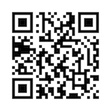
I also upload full lesson videos to YouTube, so you can watch or review anytime.
And don’t worry — chat names won’t appear in the videos. Your privacy is important.
youtube.com/@sakura_saku.lesson
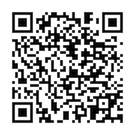
I’m truly grateful for your time and support.
Your interest in Japanese means so much to me.
Let’s keep learning together!

